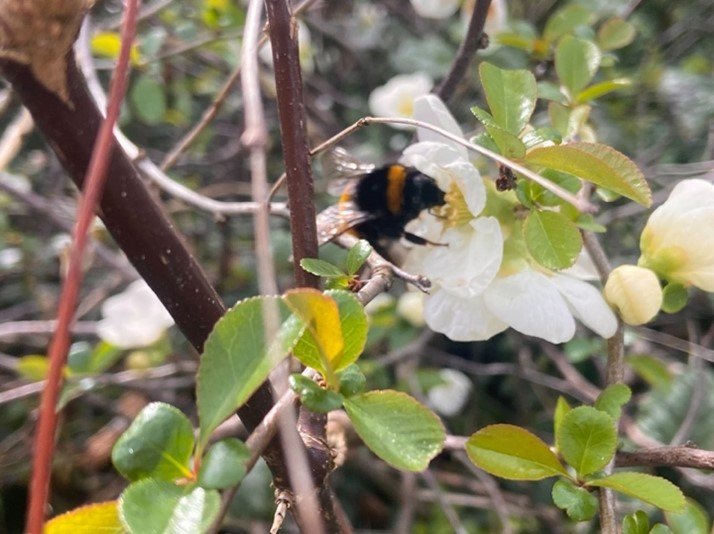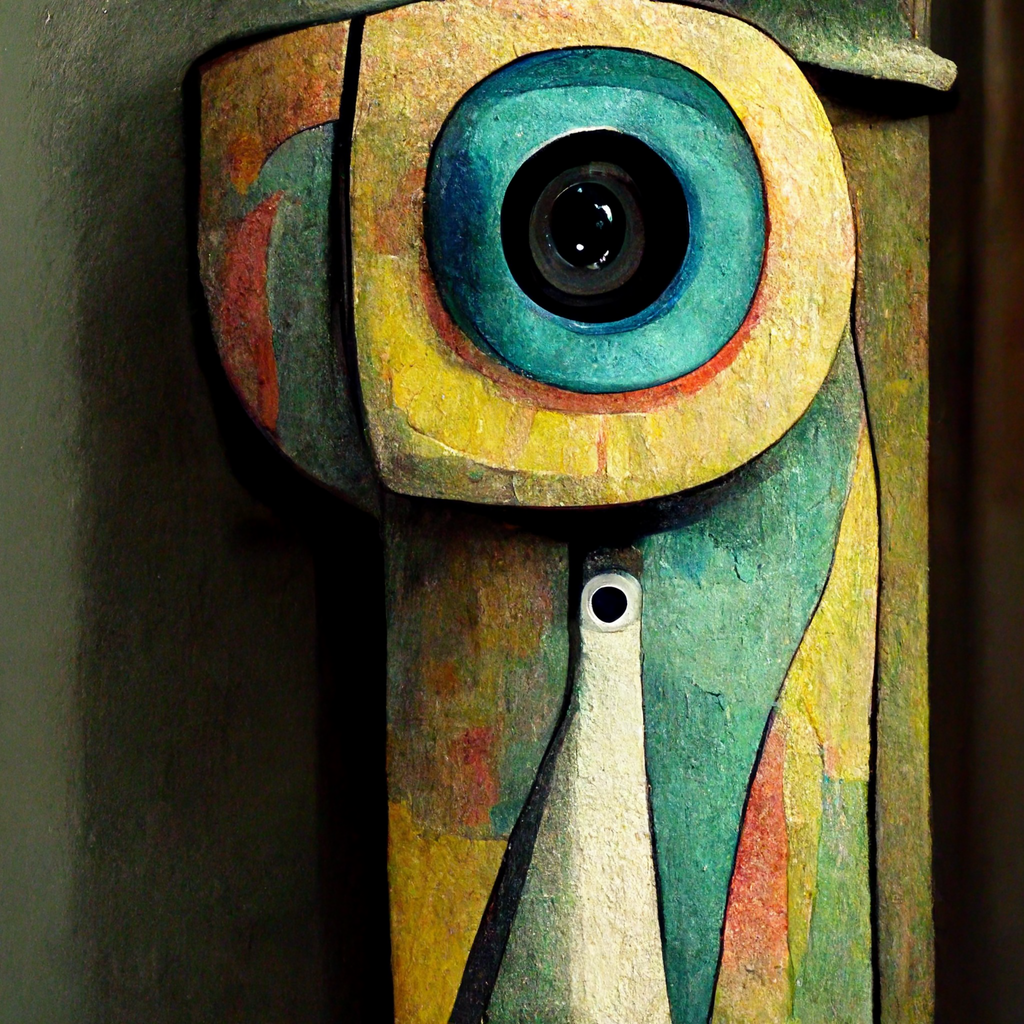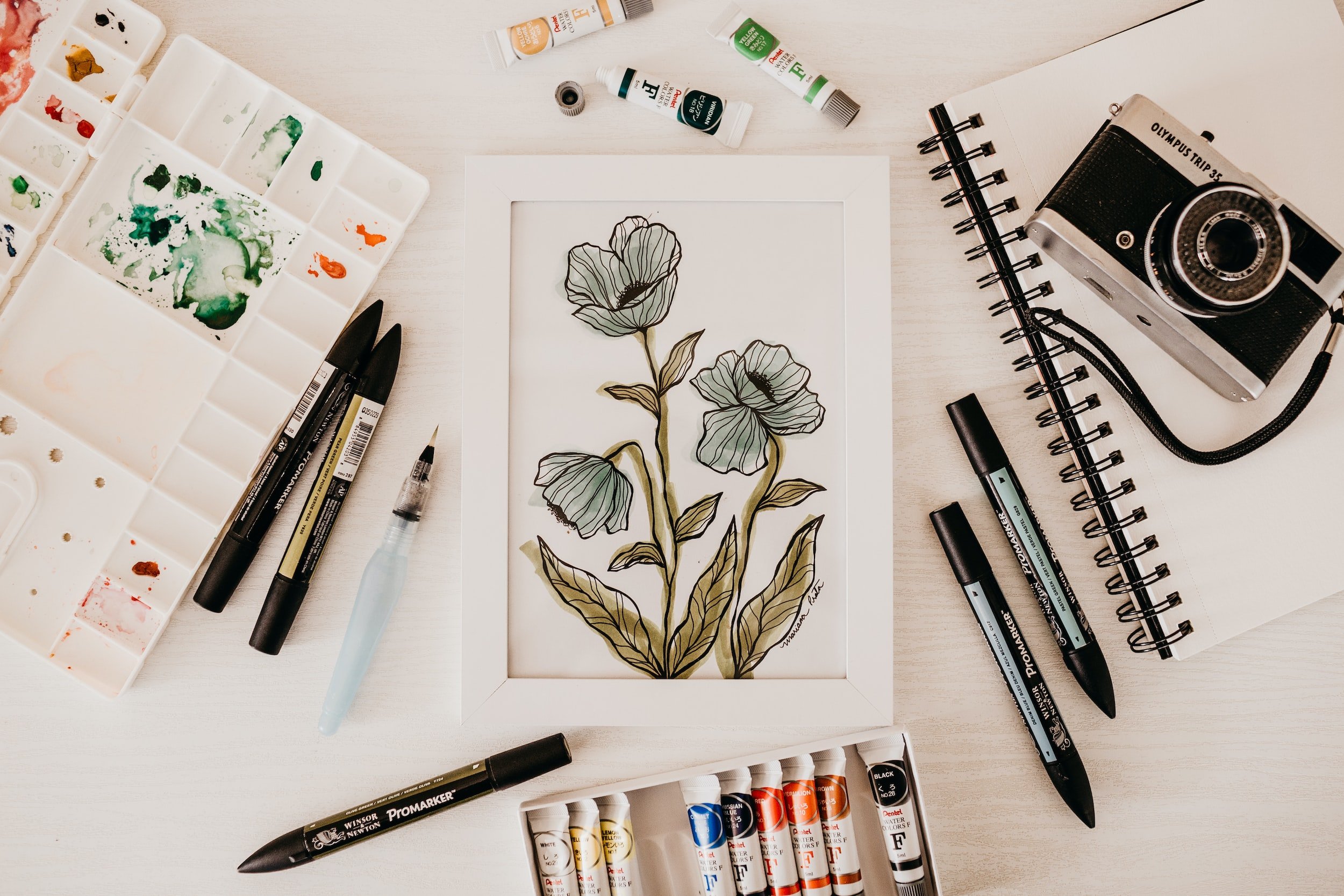Student Storytelling Needs Multimodality: Creating Authentic Spaces for Students to Story their Lives
By Sara Johnson
In this post, Sara Johnson, Head of School and an executive doctoral student in the Mid-Career Doctoral Program in Educational Leadership at the University of Pennsylvania, reflects on the role of multimodality in student storytelling as it emerges in her work and her research into that work. As a school leader who understands first-hand the catalytic value of storytelling and promotes it through multimodality in her school, Sara begins with a multimodal story, which evinces the power of storytelling to transmit culture, emotion, and place. It is part of the December 2022 focus on Creative, Arts-Based, and Visual Methods.
Blue Texture Study by Bryan Sorto-Guzman
The room was a pale blue color with the warm sunlight pouring through the lace curtains. My grandfather was resting in his bed. The house was warm and smelled of ham and biscuits. Next to him were piles and piles of journals. Written stories of his past captured in these pages.
My grandfather worked in the town’s steel mill, and as a result lost most of his hearing. His hands were deformed with his ring and pinky fingers bending upward in opposite directions . It was both cartoonish and nightmarish when his shaky crooked fingers would come toward my face in his favorite game of “I gotch yer nose.” In my youthful eyes, my grandfather was funny, kind, and strong as an ox.
My grandfather left school as a young boy with only an elementary education. Though he’s never said as much, I suspect this was his one regret. With every visit to his house, grandfather would regularly emphasize to me the importance of school. He believed in the power of education and I obediently reassured him I shared this belief.
During most visits he would pull out his journals to share a story or memory. He loved telling us far-fetched stories of his youth, though we were never sure if they were true. As I later learned more about the Appalachian culture and way of living, I realized quite likely his stories were factual. These stories were captured in the handwritten and typed journals of my grandfather. Upon his passing, his daughter quickly swooped in to collect the journals, creating a barrier of access to my own cultural identity.
Storytelling is a long-standing tradition in many cultures and communities around the world (Colket et al., 2021). In the context of schooling in the United States, the process of storytelling through the arts—including photography, drawing, painting, movement, reflective writing, and oral traditions—provides opportunities for students to share and reflect on their experiences, contextual histories, and personal values in community (Khalifa, 2018). Broadly, storytelling plays a significant role in preserving cultural histories and supporting positive identity development and affirmation. Multimodal storytelling has the power to transform learning spaces into healing spaces when modes of culturally responsive storytelling are foregrounded and embraced (Ravitch & Kannan, 2022; Solórzano & Yosso, 2002).
Describing storytelling in the classroom, community literacies expert Dr. Gerald Campano (2007) notes that “storytelling can provide a window into a student’s lived experiences [and] enables students to weave their unique histories into the fabric of the classroom community” (p. 50). What’s becoming increasingly clear is that educators cause cultural disconnects when storytelling is not present, when bridges to the personal are removed from learning, and when students must adhere to norms of environments that remove their authentic narratives from their classrooms.
As a teenager I was regularly mocked for how I spoke. My Southern Ohio drawl stood out at my large midwestern public school. Peers would tease, “Sara, what day is it?” “Tuesdee”, I would reply only to hear giggles. The teenage boys called my accent “cute”, which only made me feel more self-conscious. So, I worked hard to change the way I spoke in an effort to fit in, a process I later learned called ‘code-switching.”’ On campus, I looked the privileged part. My white skin and blue eyes allowed me to blend in with all of the White students. But I didn’t identify with those who looked like me. The world I grew up knowing was not their world. And this college campus land was completely foreign to me. Many days and months I believed I did not belong, yet I felt at home in this place that so deeply valued learning. My survival instinct was to mirror what I saw, at the loss of recognizing the value of my own cultural identity in the classroom space. Today, I have very few traces of my Appalachian roots and mourn the loss of another cultural tie severed.
In this reflection, I’m acutely aware of how my own identity was shifting because of the stories I carried and narratives I was creating. These narratives are influenced by cultural norms, familial relationships and values, and the priorities and stances of school communities. This matters to who students are, who they can be, and how they learn. In schools, the arts can provide an equitable format for storytelling, one that can be made accessible to all student populations, one that empowers all student voices and lifts all student identities through a flexible medium and process that are both reflective and expressive. Today, students need to share their stories more than ever. And because of this widely shared reality, school leaders are tasked with leading engagement in the arts as a way to create the conditions for stories and narratives to enter and live within the school space in ways that are resonant to students’ lives and therefore authentic.
This process of centering student voices in schools relies on creating the conditions for counter-storytelling—processes whereby traditionally marginalized students tell their own stories instead of them being portrayed through a dominant narrative (Colket et al., 2021). Educational research and practice, and those of us who live across them, must centralize the narratives, identities, and stories of students as a primary learning structure. This can only happen when schools, and the students within them, generate their own data to speak back to top-down metrics and grand narratives of deficit (Ravitch, 2020). One powerful way to engage student voices is by providing environments that center multimodal storytelling, rather than relegating the arts to electives, or something schools would like to provide.
Multimodal storytelling gives students the ability to communicate culture, expression and feeling, place and community. When devalued within or removed from a school setting, student identities are not only undermined, but also potentially lost. The arts and reflective writing, provide a means for students of all backgrounds and experiences to express who they are and the stories they want to tell. Creative expression offers a common language in which to communicate, and the arts format specifically provides an opportunity for multimodal storytelling when words alone simply can’t do a story justice. As a school leader and practitioner-scholar, I see the need for multimodal storytelling as a primary mode of schooling, and, moreover, understand the need to study student storytelling to fully understand its impact on students and within school communities.
References
Campano, G. (2007). Honoring Student Stories. Educational Leadership, 65 (2), 48-54.
Colket, L., Light, T. P., & Carswell, M. A. (2021). Becoming: Transformative Storytelling for Education's Future. DIO Press.
Khalifa, M. (2018). Culturally Responsive School Leadership. Harvard Education Press.
Ravitch, S. M. & Kannan, C. A. (2022). (Eds.). Flux Leadership: Real-time Inquiry for Humanizing Educational Change. Teachers College Press.
Ravitch, S. M. (2020). Flux Leadership: Leading for Justice and Peace in and beyond COVID-19. Perspectives on Urban Education. 18(1). 29-67.
Solórzano, D.G., & Yosso, T. J. (2002). Critical Race Methodology: Counter-Storytelling as an Analytical Framework for Education Research. SAGE Publishing




















Sometimes taking a break from the keyboard to write by hand unleashes creativity.